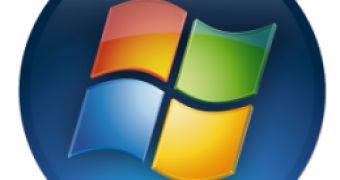Windows Vista was nothing short of crucified for backpedaling in terms of performance compared to its precursor, Widows XP. But one thing that Microsoft cannot afford is perpetuating the Service Pack 1 myth. Meaning exactly what it managed to do with Vista. Fact is that the RTM version of Vista is no contest in terms of performance compared to the SP1 Build. But at the same time, improving the performance of Windows Vista only with the release of Service Pack 1 is a move bound to reverberate and impact the next major iteration of the Windows client. In this context, Microsoft has to tune Windows 7 to perfection from RTM, and break the generalized practice that consumers should wait for Service Pack 1 before upgrading.
In a recent Springboard series episode moderated by Microsoft Technical Fellow Mark Russinovich (available via this link), the discussion focused on Windows Vista does emphasize the performance gap between the RTM and SP1 milestones of the operating system. Inferior hardware infrastructure and resources are but one of the aspects which contributed to Vista delivering poor performance. According to Russinovich, the ecosystem hardware and software solutions as well as the components of a specific IT infrastructure can negatively impact the performance of the operating system, in addition to the inherent shortcomings of a RTM build. But in the end, SP1 was an undeniable breath of fresh air for Vista.
“There are a number of really good fixes that went into SP1 to improve performance across things like boot, file copy performance. So there was an emphasis by Microsoft to really have SP1 focused on addressing some of those performance concerns. But I think that it's worth talking about the ecosystem maturity and the fact that we are seeing a lot of these drivers for common devices really improving on not just performance but also power management which is often a trade-off that has to be made in devices. How effectively can we perform at high speeds but also on battery power as notebooks are becoming more and more prevalent in the ecosystem. So that driver maturity has really helped a lot in terms of the kind of performance that people can expect on a Vista platform,” stated Gabriel Aul, Principal Group Program Manager for Microsoft, Windows Performance.
As far as Windows 7 is concerned, Microsoft started working with the ecosystem of hardware manufacturers and software developers as early as 2007, with the Milestone 1 release of the operating system. Almost a year later, the Redmond giant is cooking the first broadening of the Windows 7 testing program by making a pre-Beta version of Windows 7 available to all participants to the Professional Developers Conference 2008 and the Windows Hardware Engineering Conference 2008 in late October, respectively early November. Windows 7 Milestone 3 Build 6780 is only available to a selected pool of testers, but indications reveal that even at this early stage, the operating system is stable and performs better than Windows Vista when it was in pre-Beta.
Windows Vista Service Pack 1 All Language Standalone for both 32-bit and 64-bit versions of the operating system is available for download HERE.

 14 DAY TRIAL //
14 DAY TRIAL //